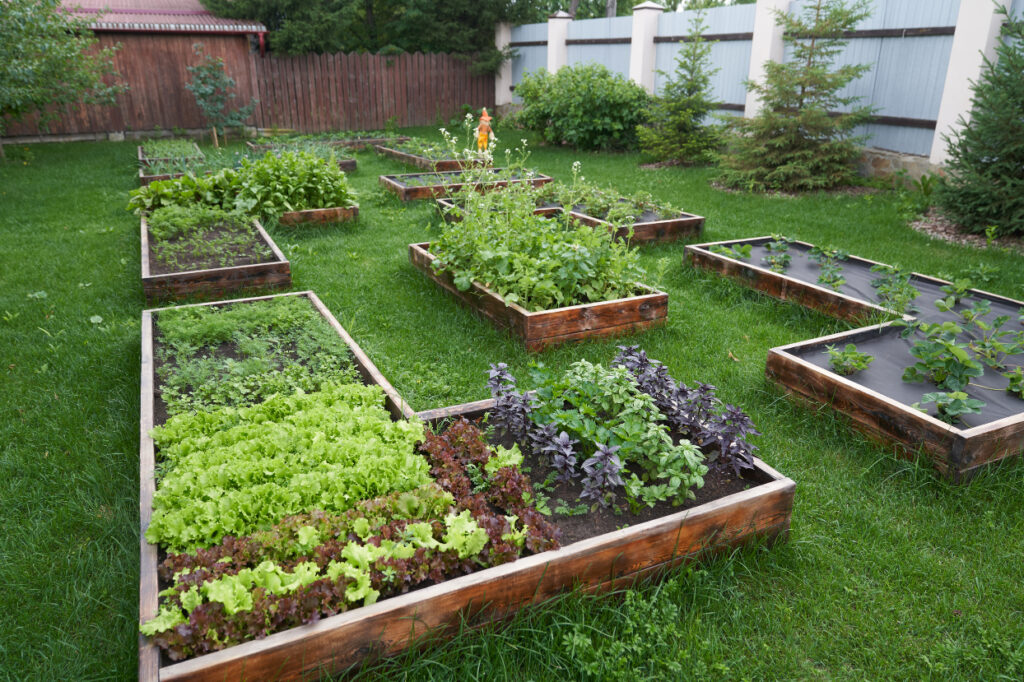Starting a homestead garden is one of the most rewarding steps toward self-sufficiency and a healthier lifestyle. Whether you have acres of land or just a small plot, you can grow fresh vegetables, fruits, and herbs with the right plan and techniques. This beginner’s guide will walk you through everything you need to know to create a productive homestead garden from scratch.
Understanding the Purpose of Your Homestead Garden

Before planting a single seed, it’s important to define your goals. Are you growing for your family’s consumption, to sell at local markets, or both? Your purpose will determine the size, layout, and types of crops you grow.
Deciding on Crop Variety
Choose crops that your family eats regularly, that grow well in your climate, and that you can store or preserve. Start small with easy-to-grow vegetables like lettuce, tomatoes, cucumbers, and beans.
Choosing the Right Location
The success of your garden begins with location. Most vegetables need at least six to eight hours of direct sunlight each day.
Factors to Consider
- Sunlight Exposure: Pick a spot that gets full sun for most of the day.
- Soil Quality: Avoid low areas where water pools, as this can lead to root rot.
- Accessibility: Keep your garden close to your home for easy watering, weeding, and harvesting.
Preparing the Soil for Planting
Healthy soil is the foundation of a productive garden. Invest time in preparing it before planting.
Testing and Improving Soil
Conduct a soil test to understand its pH and nutrient levels. Add compost, organic matter, and natural fertilizers to enrich it. Avoid chemical fertilizers that can harm beneficial soil organisms.
Tilling vs. No-Till Gardening
While tilling can help loosen compacted soil, many homesteaders prefer no-till gardening to protect soil structure and encourage earthworm activity.
Planning Your Garden Layout
A well-thought-out layout will make your garden more productive and easier to manage.
Raised Beds or In-Ground Planting
Raised beds offer better drainage and soil control, while in-ground gardens work well for larger areas.
Companion Planting
Plant crops together that benefit each other. For example, tomatoes and basil grow well side by side, while marigolds can help deter pests.
Starting Seeds or Using Transplants
You can either start plants from seeds indoors or buy young plants (transplants) from a nursery.
Pros of Starting from Seeds
Seeds are less expensive, allow more variety, and can be started earlier indoors.
Pros of Transplants
They provide a head start for the growing season and are ideal for beginners who want faster results.
Watering and Irrigation Systems
Consistent watering is essential, especially in the early stages of growth.
Drip Irrigation
This method conserves water and delivers moisture directly to plant roots.
Watering Schedule
Water early in the morning to reduce evaporation and prevent disease.
Managing Pests and Weeds
A productive garden needs ongoing pest and weed control.
Organic Pest Control
Use natural deterrents like neem oil, insecticidal soap, or beneficial insects such as ladybugs.
Weed Prevention
Mulch helps suppress weeds while retaining soil moisture.
Harvesting for Maximum Yield
Harvest vegetables regularly to encourage more production. For example, picking cucumbers and beans every few days stimulates the plant to produce more.
Extending the Growing Season
With a few simple tools, you can grow vegetables beyond the standard growing season.
Cold Frames and Row Covers
These protect plants from frost, allowing you to harvest into late fall or even winter.
Greenhouses
A greenhouse lets you start seeds early and grow crops year-round.
Building Long-Term Soil Health
Your garden will only remain productive if you take care of your soil season after season.
Crop Rotation
Rotate crops to avoid nutrient depletion and reduce pest buildup.
Composting
Recycle kitchen scraps, leaves, and grass clippings into compost to naturally enrich the soil.
FAQs About Starting a Homestead Garden
1. How much land do I need for a productive homestead garden?
Even a small space, such as 500 square feet, can produce enough vegetables for a family if managed well.
2. What are the easiest vegetables for beginners to grow?
Lettuce, radishes, tomatoes, zucchini, and green beans are easy and high-yield choices.
3. How often should I fertilize my garden?
Generally, once every 4–6 weeks during the growing season, depending on the crop and soil condition.
4. Can I grow vegetables if my soil is poor?
Yes. You can build raised beds and fill them with high-quality soil and compost.
5. How do I keep my garden productive year after year?
Practice crop rotation, replenish the soil with compost, and maintain a balance of nutrients through organic amendments.





